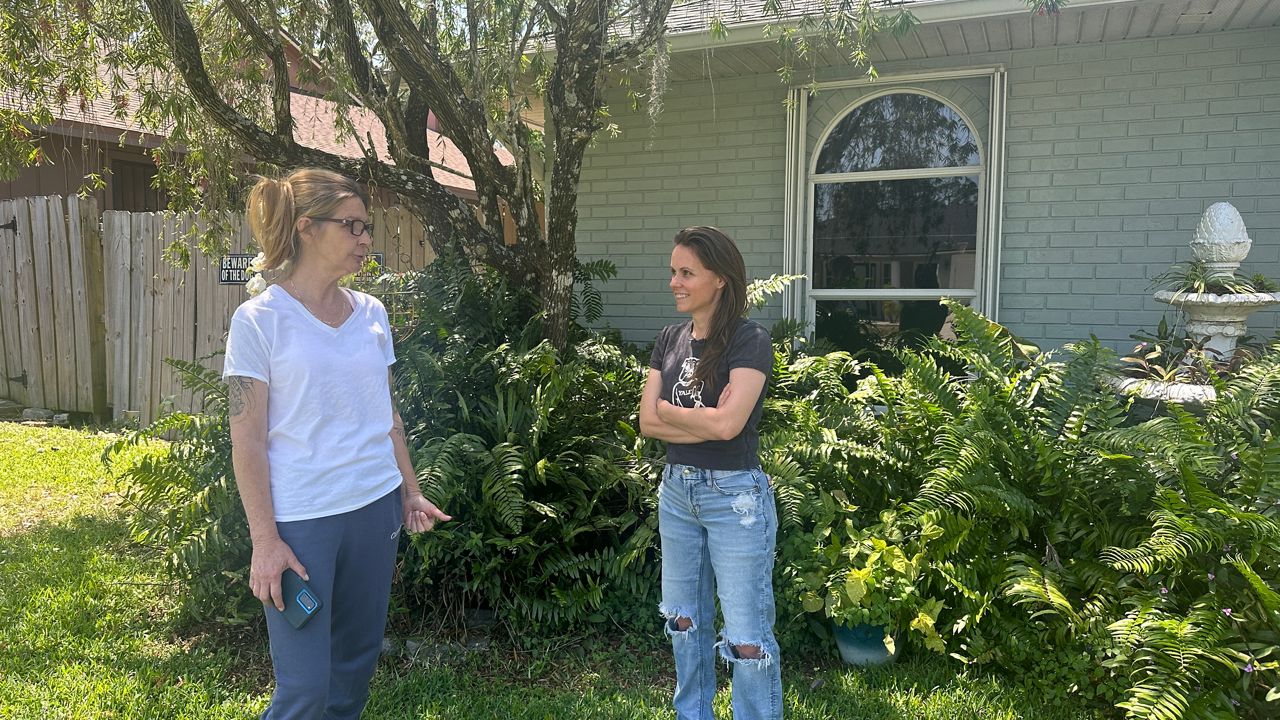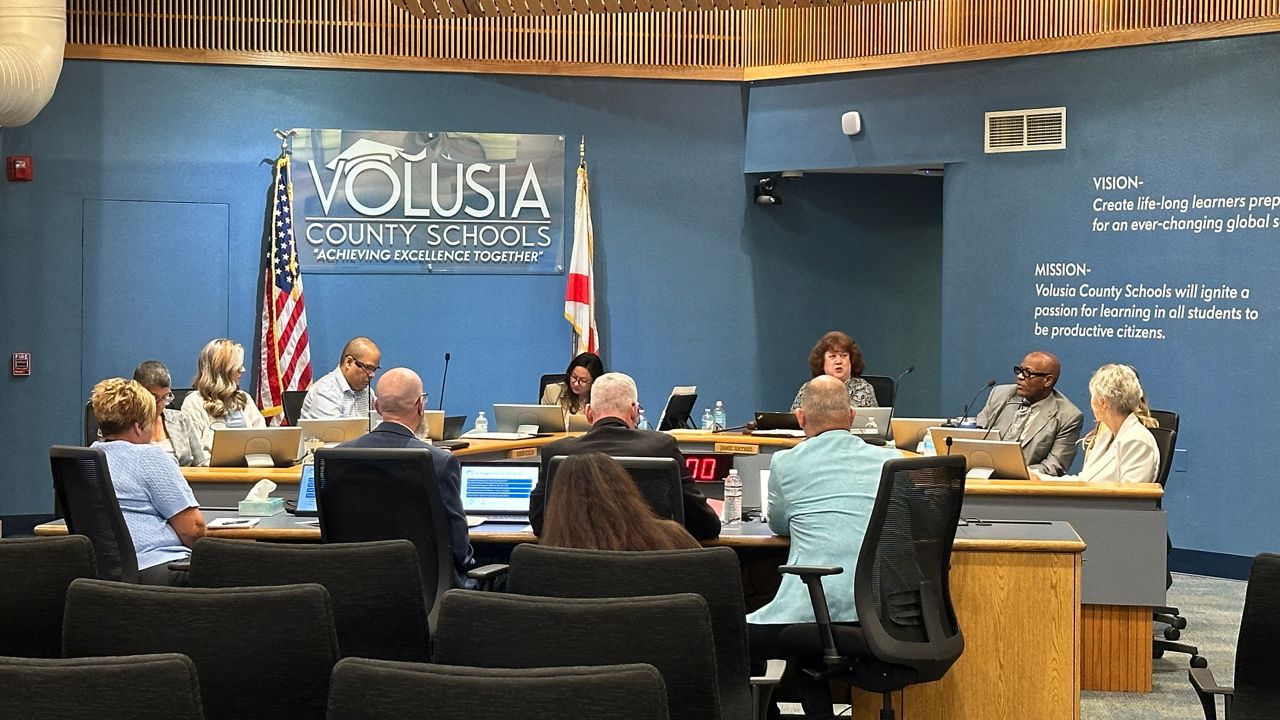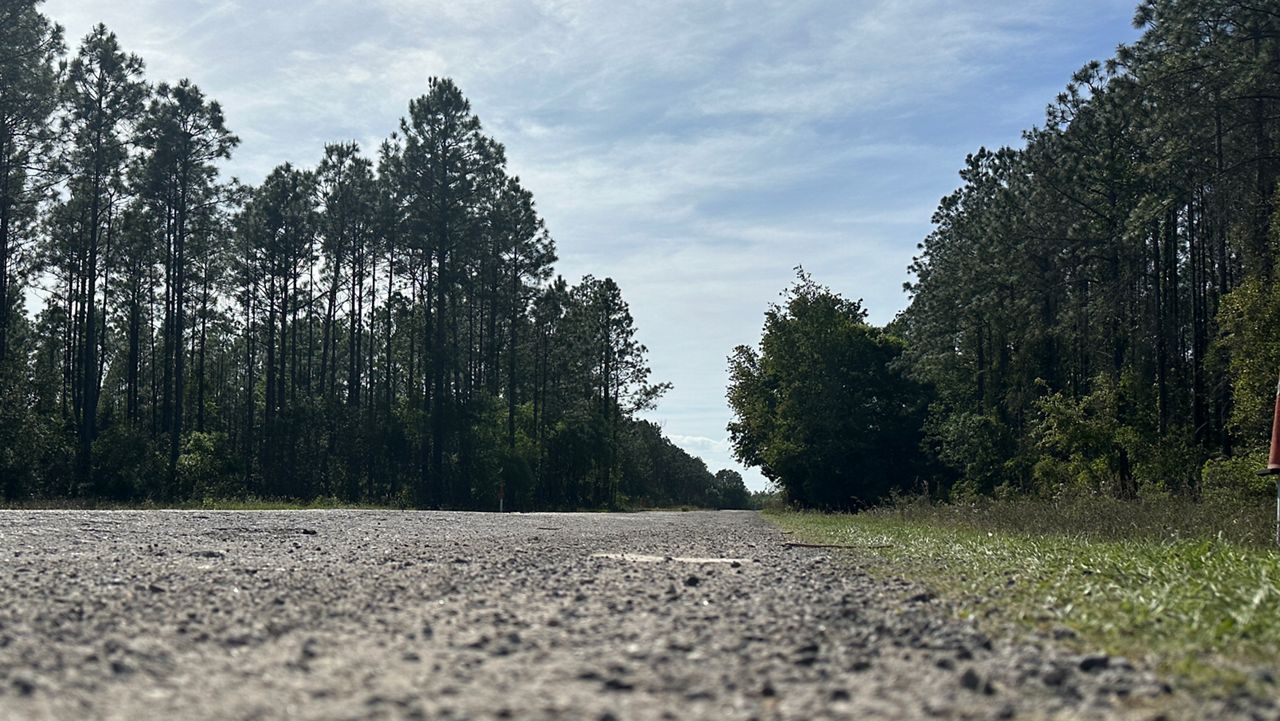PORT ORANGE, Fla. — In November 2022, Hurricane Nicole came through Central Florida, resulting in the destruction of homes along Florida’s east coast.
What You Need To Know
- A collapsed retaining wall meant to protect the Cambridge Basin Area malfunctioned that malfunctioned during Hurricanes Nicole and Milton led to thousands of Port Orange being flooded
- One Port Orange resident says the city had ample amount of time to come with a permanent fixture in the two years since the seawall collapsed and Hurricane Milton
- The city of Port Orange is working on a long-term fix that would raise the berm to match the height of the railroad tracks, to prevent storm surge from infiltrating ponds and the canal system
- But construction for the project isn’t set to begin until the beginning of 2026, leaving residents worried about what will happen to their homes before the project’s completion
Port Orange was among those coastal neighborhoods to have felt the impact of the storm.
Storm surge from the hurricane caused the Cambridge Canal Pump Station’s retaining wall to collapse in on itself, leading to homes being flooded.
Port Orange City Engineer Junos Reed described it as a “raging rapid,” since the water from Rose Bay had spilled into nearby ponds and then into the city’s canal system.
According to the city, there are more than 200 miles of canals and ditches throughout Port Orange that play a role in moving stormwater out. Many of which are located behind people's homes, which contributed to the flooding.
Even though the city made temporary repairs to both the wall and the pump station following Nicole, it still wasn’t enough to protect residents’ homes during Hurricane Milton.
At the time, that temporary solution called for the implementation of one operational water pump and the construction of a sandbag wall to keep the water from Rose Bay out.
Even though the city invested over half a million dollars’ worth of sandbags to protect residents against future storm surge while it figured out a permanent solution, their plan failed.
Residents like Ryann Stevens had their homes flood for a second time the night Hurricane Milton struck Central Florida.
With Hurricane season quickly approaching, Stevens is growing impatient as the city works towards a permanent fix to the pump station, which she believes could have been avoided.
City officials like Junos Reed say they’ve got big plans to ensure this never happens again.
Port Orange resident and mom of two young children, Ryann Stevens says she feels frustrated nearly six months after Hurricane Milton flooded her home for a second time in the span of two years.
“Having to clean my house and, you know, explain to my little ones that your toys are gone; your house is gone. So, it’s very frustrating,” Stevens said.
She is still rebuilding parts of her home that were damaged during the hurricane by repainting the floors and doors, but she isn’t getting ahead of herself with the repairs because she says she could lose it all again in a few months.
“It helps us with the clean-up process. The less we would have to rip up and so we would have to rip up drywall, base boards, cabinets, if the water gets too high, so at least this’ll kind of decrease our cleanup,” adds Stevens.
On the night Milton struck, she says her home flooded in the span of forty-five minutes despite not being in a flood zone.
Now she’s fearful that it could happen again due to the Cambridge Pump Station’s retaining wall that initially broke during hurricane Nicole in 2022.
“We’re 28 months from Nicole. We should be close to being finished if they had acted efficiently and effectively from the beginning,” says Stevens, who has held the city accountable for their actions since Hurricane Milton flooded her home a second time.
The Cambridge Pump Station was designed to pump water out of the Cambridge basin area and into the Halifax River to manage stormwater runoff.
But in 2022, storm surge from hurricane Nicole caused the pump station’s retaining wall to collapse, leading nearby homes being flooded.
The city then placed over half a million dollars’ worth of sandbags along the berm, as a temporary fix.
But during Hurricane Milton, part of the sandbag wall collapsed, causing many homes in the Port Orange neighborhood to flood again.
City of Port Orange officials explain that they’re currently in the design phase for a permanent fix of the Cambridge Pump Station.
These improvements will entail raising the berm to match the height of the railroad tracks that run west of Rose Bay.
“It’s going to be a 72-inch diameter pipe that’s going to come all the way east and then once we get to this point, we have to go underneath the railroad tracks,” explains Reed.
On the other side of the tracks is where the “discharge structure” will be located and that is where the water will leave the system flowing out into the Rose Bay.
But construction for that project wouldn’t begin until the beginning of next year, according to city engineer, Junos Reed.
For this upcoming hurricane season, the city will have to rely on beefing up the number of sandbags along where the retaining wall used to sit, to protect against storm surge.
But Junos Reed says it’s all part of a bigger plan.
“We don’t want a solution that’s going to be fast, we want a solution that’s going to be resilient and that’s going to work,” explains Reed.
He admits the process is lengthy, but he explains that it’s because of the permitting process with the Army Corps of Engineers, the St. Johns River Water Management District and now, the Florida East Coast Railroad.
He says the good news though is that the permits have already been approved and that they have now hit the 90% mark of the design stage.
“We’re going to certainly do everything we can to mitigate and limit amount of flooding at all possible,” says Reed, who wants his legacy in Port Orange to be about how he helped address flooding issues.
Design and scheduling are on track to be complete by the fall and then once that is complete, the city will have to bid the project out to get prices from contractors, which Reed estimates will add a couple months to the process.
Once the bid evaluation process is complete, the city will have to bring the bid to council for it to get approved through a series of city council meetings.
The city anticipates being under construction by the beginning of next year and expects construction will take an average of 16 months.
“It seems like it’s not moving fast because we haven’t physically come out here and dug any dirt up or put any pipes in the ground. We’re still moving the process forward as expeditetedly as we can,” adds Port Orange City Engineer, Junos Reed.
The project will cost the city between 7 to 10 million dollars, according to Reed.
Most of the funding will come from the city’s stormwater fund and FEMA reimbursements, though the city says it’s possible they will have to issue a debt to pay for it entirely.
Even though Ryann Stevens is still paying for the damages caused by hurricanes Nicole and Milton, she’s keeping her head up high, knowing she has her family by her side.
But now, she is on alert.
“I would stay up the road with family or friends that don’t flood before I’d stay here so just that I don’t have them go through that again,” says Port Orange resident Ryann Stevens.












